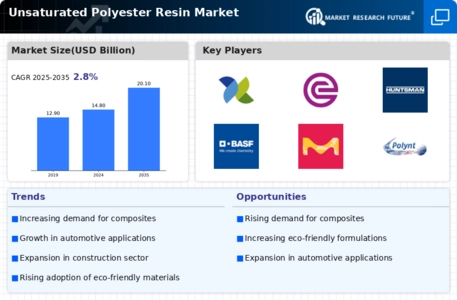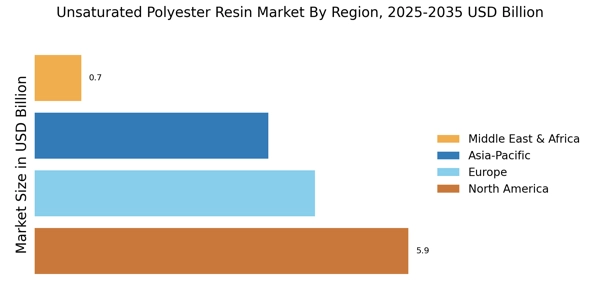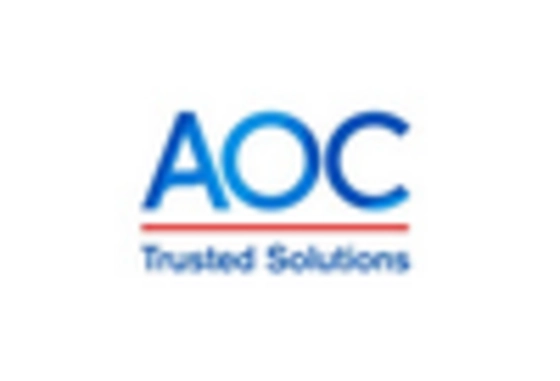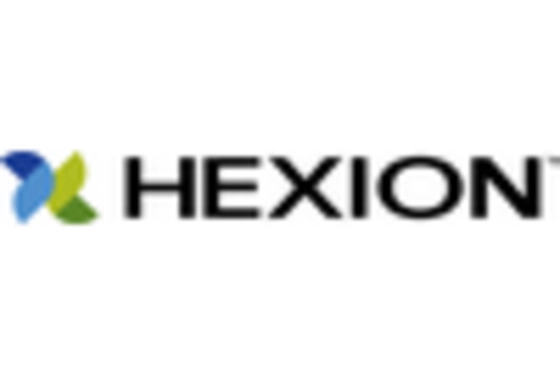Expanding Automotive Industry
The automotive sector is a pivotal driver for the Unsaturated Polyester Resin Market, as manufacturers increasingly adopt these resins for various applications. Unsaturated polyester resins are utilized in the production of lightweight components, which contribute to improved fuel efficiency and reduced emissions. In 2025, the automotive industry is expected to witness a compound annual growth rate of around 4%, further propelling the demand for unsaturated polyester resins. The shift towards electric vehicles and advanced composite materials is likely to enhance the market's growth trajectory, as automotive manufacturers prioritize sustainability and performance. This evolving landscape presents a significant opportunity for stakeholders within the unsaturated polyester resin market.
Increasing Demand for Composites
The rising demand for composite materials is a significant factor driving the Unsaturated Polyester Resin Market. Composites, which combine unsaturated polyester resins with reinforcing fibers, are increasingly utilized in sectors such as aerospace, marine, and sports equipment. The lightweight and high-strength properties of these composites make them ideal for applications where performance is paramount. In 2025, the composite materials market is projected to grow at a rate of approximately 6%, which will likely enhance the demand for unsaturated polyester resins. This trend indicates a shift towards more efficient materials that can meet the rigorous demands of modern applications, thereby presenting opportunities for growth within the unsaturated polyester resin market.
Rising Demand in Construction Sector
The Unsaturated Polyester Resin Market is experiencing a notable surge in demand driven by the construction sector. As urbanization accelerates, the need for durable and lightweight materials in construction applications becomes increasingly critical. Unsaturated polyester resins are favored for their excellent mechanical properties and resistance to environmental factors, making them ideal for use in composites, coatings, and adhesives. In 2025, the construction industry is projected to account for a significant share of the unsaturated polyester resin consumption, with estimates suggesting a growth rate of approximately 5% annually. This trend indicates a robust market potential, as builders and architects seek innovative materials that enhance structural integrity while reducing overall weight.
Sustainability and Eco-Friendly Practices
Sustainability initiatives are becoming increasingly relevant within the Unsaturated Polyester Resin Market. As industries strive to reduce their environmental footprint, the demand for eco-friendly resins is on the rise. Manufacturers are exploring bio-based unsaturated polyester resins that utilize renewable resources, thereby minimizing reliance on fossil fuels. In 2025, it is expected that the market for sustainable resins will expand, driven by regulatory pressures and consumer preferences for greener products. This shift towards sustainability not only aligns with The Unsaturated Polyester Resin Market. Companies that prioritize eco-friendly practices are likely to gain a competitive edge in this evolving landscape.
Technological Innovations in Resin Production
Technological advancements in the production of unsaturated polyester resins are significantly influencing the Unsaturated Polyester Resin Market. Innovations such as the development of bio-based resins and improved curing processes are enhancing the performance characteristics of these materials. In 2025, it is anticipated that the introduction of new formulations will lead to resins with superior thermal stability and chemical resistance, thereby expanding their application range. Furthermore, advancements in manufacturing techniques are likely to reduce production costs, making unsaturated polyester resins more accessible to various industries. This continuous evolution in technology is expected to bolster market growth, as manufacturers seek to leverage these innovations for competitive advantage.


















Leave a Comment